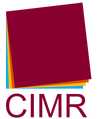Félix-Fernando Muñoz, Universidad Autónoma de Madrid (SPAIN)
Collaborations between companies and universities are critical drivers of the knowledge and innovation economy (see Antonelli, 2022). Universities have become essential partners and companies now look to universities to anchor an increasingly broad set of innovation activities, especially those grounded in engaging with regional innovation ecosystems. However, according to Frølund et al. (2018), companies often struggle to establish and run university partnerships effectively, even when key financial resources and human capital are available: corporations and universities confront a general level of frustration and a mismatch in culture and governance when they collaborate. (Frølund et al., 2018: 72).
Although national and regional regulatory frameworks recognize the importance of establishing these collaborations —this is the case of the new laws on Science (2022) and Universities (2023) recently approved in Spain— the public-private collaboration formulas suffer from problems such as misalignment of objectives, cultural resistance —that includes even the opposition of some stakeholders to this kind of collaboration— and, paradoxically, even strong legal constraints to contract.
According to COTEC’s 4th Survey on the Social Perception of Innovation (COTEC, 2021: 28), the pandemic has improved how the Spanish population regard innovation (77% see it as something positive, 4 points higher than in 2019), while contributed to reducing their perception of Spain as an innovative country. […] The percentage considering large Spanish firms as innovative declined from 47% to 39%. The vast majority of respondents (78%) continue to think that the country’s investment in R&D and innovation is insufficient, that regulations do not favour innovation (68%) and that the education system is not preparing well for society for the challenges of the future (70%).” (OECD, 2021: 82)
The study Improving knowledge transfer and collaboration between science and business in Spain (OECD, 2021) – which provides an in-depth assessment of Spain’s innovation system and the state of knowledge transfer and collaboration – proposes granting greater operational autonomy to universities and public research organisations in return for accountability on outcomes, “putting in place a better integrated system of incentives that takes both individuals and organisations into account, and ensuring sustained investment in core capabilities to connect science and business.”
Most of these challenges affect the Universidad Autónoma de Madrid (UAM). To deal with them, the UAM, like many other universities in Spain, has developed its own creative response (Schumpeter, 1947) under the formula of UAM Chairs (here on UAM-C) (In Spanish, “Cátedra UAM – ‘Entidad’” or Chair UAM – “name of the external institution”. The external institutions may be companies and other civil entities).
University-company Chairs
According to OECD (2021: 126-127), “chairs represent a potential means to establish strategic and lasting collaborations between the university and a company or entity, to carry out training, research, and development or knowledge transfer activities in an area of common interest.” There are benefits for both the university and the company or entity. In the collaborating entity side, “university-company chairs offer direct access to the university’s human resources and certain infrastructures, being able to support different actions (scholarship programs for the completion of End-of-Degree Projects, exploratory or technological surveillance, or promotion of outreach and dissemination days). For the university, they represent an opportunity to secure regular funding for lines of research, instruments for training students and researchers or exchange of personnel, and commercial exploitation of the results of their research.”.
To date, Spanish public universities have constituted some 1,400 chairs. Of the 50 public universities, 29 universities cover 80% of these chairs. The cumulative distribution of university-company chairs is in Figure 1.

Figure 2 shows the regional distribution of these university-company chairs.

Main features of the UAM Chairs model
The UAM-Cs chairs are the most effective model at UAM for the generation and transfer of knowledge. It is a very flexible formula that allows one to avoid some of the main legal difficulties for the maintenance of public-private collaborations and thus organize different activities in which companies or entities enjoy a leading role. As said above, UAM-C chairs are not oriented to the solely provision of services. In fact, there is no customer-supplier of services relationship, but a long-term collaboration agreement for research and innovation. Thanks to this strategy, the formula of collaboration “does not step on” other laws – such as those on public administration contracting.
In addition, there is the possibility that year after year the external entity (a firm, public or civil legal entity, an NGO, etc.) influences the design of the activities to be developed. There is, unlike other similar models in Spain, true governance and monitoring: accountability is an essential value of the pillars of its success.
How do they work?
A Chair at UAM is the result of an agreement between the UAM and an external entity to promote and enhance activities, mainly research, and innovation, that allow obtaining a significant advance in the field of activity of the Chair. The agreement is 3 years, which can be extended if there is an express agreement between the parties to continue this cooperation scheme. UAM-Cs are financed with the economic contributions of the external entity, the minimum annual contribution being 50,000 euros.
The sequence for the implementation of a UAM-C chair is as follows:
- Detect the main idea and establish contact between the interested entity/entities and the UAM (FUAM (the Foundation of the UAM) is the TTO that manages the chairs on behalf of the UAM).
- The UAM seeks among the leading experts of the UAM the research team that best fits the necessary profile in the field of activity in which the Chair will be framed.
- Strategy and contents are agreed upon.
- Legal procedures at the UAM (approval of the research centre, approval of the Rectorate, etc.).
- Finally, a Framework Agreement (contract) and a Specific Agreement are signed in a public protocollary act.
Once approved and signed the contract, the design of the activities of the Chair will correspond to its Director, who is a full-time professor (Full or Associate professor) or researcher at UAM, through the preparation of an Annual Plan of Activities. This plan must be approved by the Board of Directors of the Chair (the joint governing body of the activity of each Chair in which the UAM and the external entity will have an equal presence) which shall meet at least once a year.
The UAM-Cs will be able to develop mainly research activities, to a lesser extent also continuous training and dissemination of knowledge. Among others, they may develop the following ones:
- Carrying outlines of research, development, and innovation, both joint and on its own, related to the purposes of the chair.
- Provide support (not only funding) in the realization of doctoral theses in the area of knowledge of the Chair.
- Research work.
- Facilitate the exchange of research experiences and knowledge between the collaborating entity and UAM professors and researchers interested in the topics covered by the chair.
Number, distribution, and revenue of UAM-Cs
Since its inception in 2003, the UAM-C covers teaching and research activities in multiple fields of knowledge (The UAM has 7 faculties and a Polytechnique School, specializing in telecommunications and informatics), from the most innovative branches in medicine and health, economics, and real estate management, to the environment or biopsychology and disability.
To date, 85 chairs have been established (and 276 contracts), and 31 of them are currently working (with 129 contracts). Most of them (66%) correspond to biomedical sciences, followed by the faculty of Business and Economics and the Polytechnical School (other 20%). Figure 3 shows the historical distribution of the chairs (similar to the current record, except that the Polytechnic School has decreased by around 3% and Business and Economics increased in that amount).

The evolution of C-UAM revenues is shown in Figure 4.

Economically, contributions by the external entities amounted, in the whole period, to 25.12 million euros —an average of 91,000 euros per contract.
Some examples of current Chairs are, for example, UAM – IIC Computational Linguistics; UAM – Naudit in teaching and research in networks, systems, and high-performance services; UAM – Novartis in Immunodermatology; UAM – Open Value in Impact Investing; UAM – ROCHE in Pharmacotherapy of Patients with Chronic Pathology; UAM – TIMÓN Ibero-American Studies “Jesús de Polanco”; UAM-Merck of individualized precision medicine; UAM of Innovation in Neurosurgery; UAM-AMGEN of medical oncology and palliative medicine; UAM-CTFC-Total Energies on habitat quality of steppe birds and other associated biodiversity and management.
Other forms of collaboration
The UAM also offers the possibility of signing a “pre-Chair” agreement between the entity and the UAM that allows activities to begin. This agreement establishes a clause stipulating that after a period of between 6 and 8 months from the signing of the agreement without the Chair itself having been signed, the entity could terminate the contract. Likewise, other collaboration formulas that resemble or have as a model these chairs but that due to their duration or type of specific service differ from these are the observatories and the UAM classrooms. In these cases, the orientation is to the provision of services (observatories) or in company training or on-demand (Lecture halls).
Concluding remarks
The UAM-Company chairs are a creative response to the legal, bureaucratic, and cultural difficulties of public-private collaboration in terms of innovation and transfer. Its biggest advantages lie in flexibility and accountability. For a company is cheaper than an endowment, and more flexible since the company can discontinue it at any time.
At UAM the core of the chairs is biomedicine up to two-thirds of total contracts. But also, UAM-Company chairs are an important instrument in business and economics, telecommunications, and informatics.
Although a relatively big success for UAM, this chair model faces important challenges: new and changing regulations, competitive pressure from other public and private universities, its dependence on the business cycle, etc.
References
Antonelli, C. (Ed.) (2022). Elgar Encyclopedia on the Economics of Knowledge and Innovation. Cheltenham UK and Northampton MA: Edward Elgar.
COTEC (2021). Encuesta de percepción social de la innovación en España. https://cotec.es/observacion/encuesta-de-percepcion-social-de-la-innovacion/e2f616e7-3653-ea88-a052-f11e8c0ce2e5 (accessed on 3 May 2023).
Frølund, L., Murray, F., & Riedel, M. (2018). Developing Successful Strategic Partnerships with Universities. MITSloan Managenet Review (Winter 2018), 71-79.
Guimón, J. (2013). Promoting University-Industry Collaboration in Developing Countries. World Bank: Policy Bief, 1-11.
OECD. (2021). Improving knowledge transfer and collaboration between science and business in Spain. doi: https://doi.org/10.1787/4d787b35-en
Schumpeter, J. A. (1947). The creative response in economic history. Journal of Economic History, 7, 149-159.

